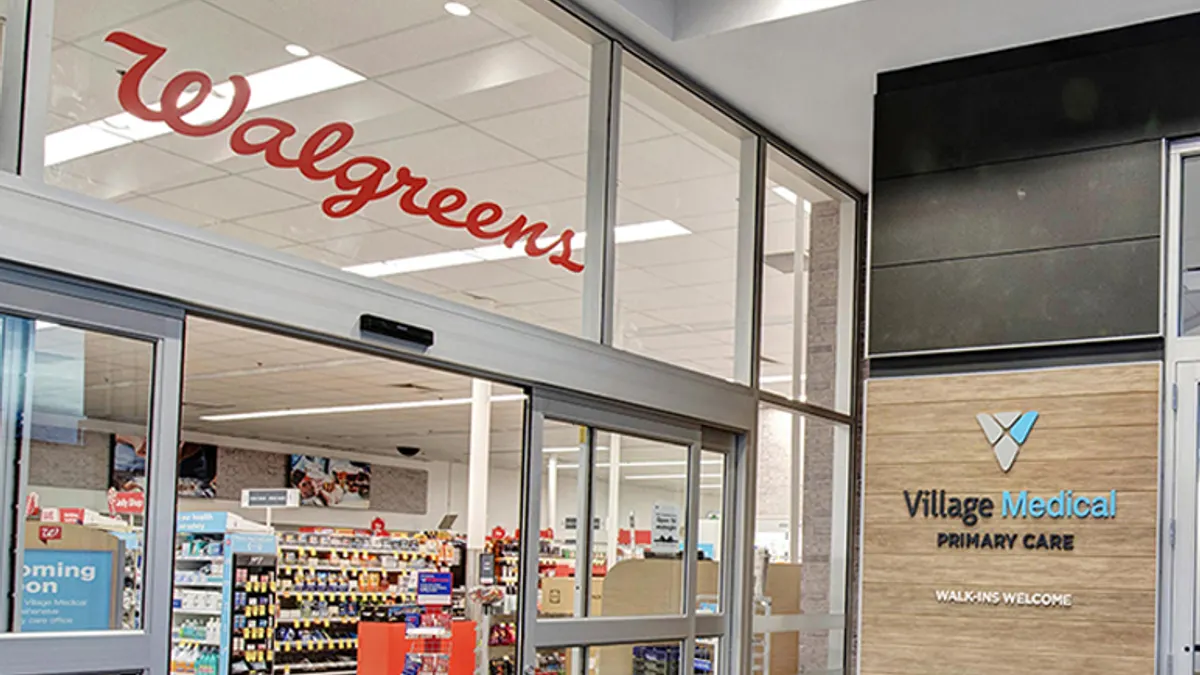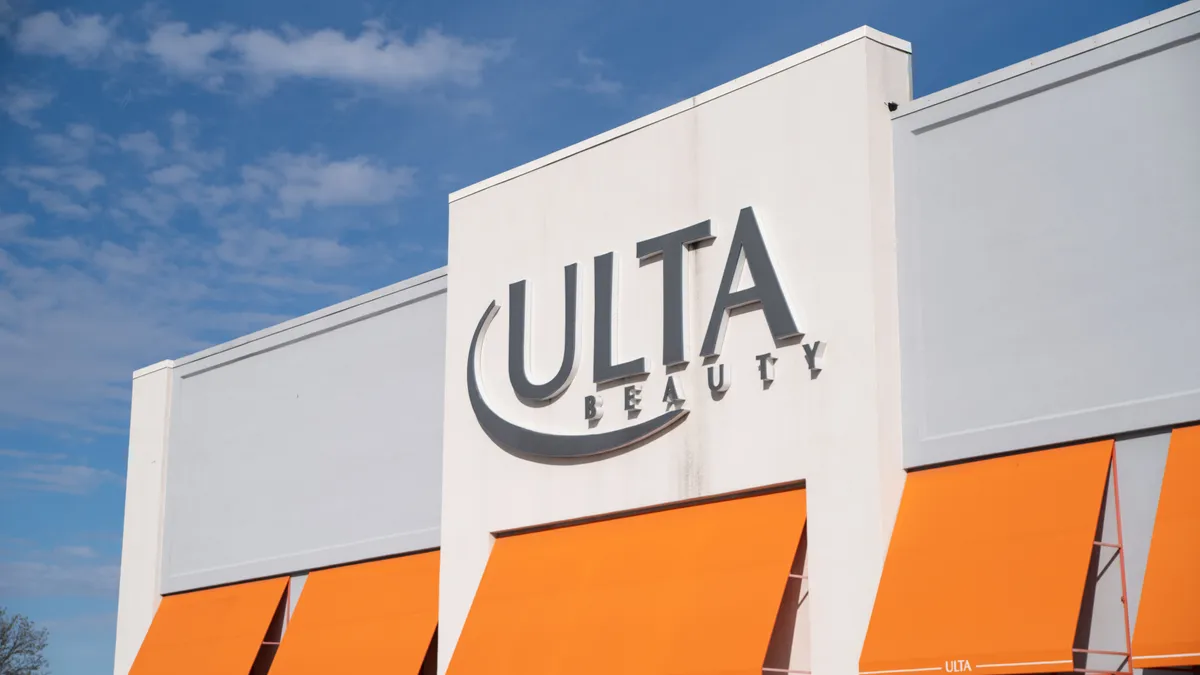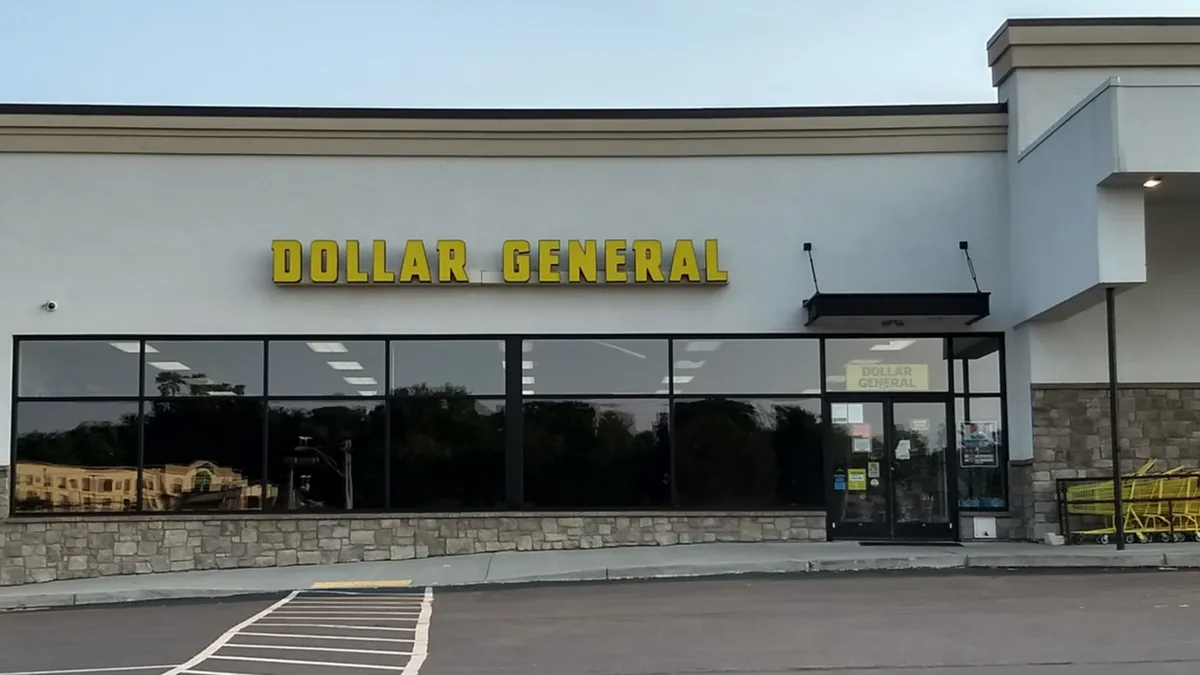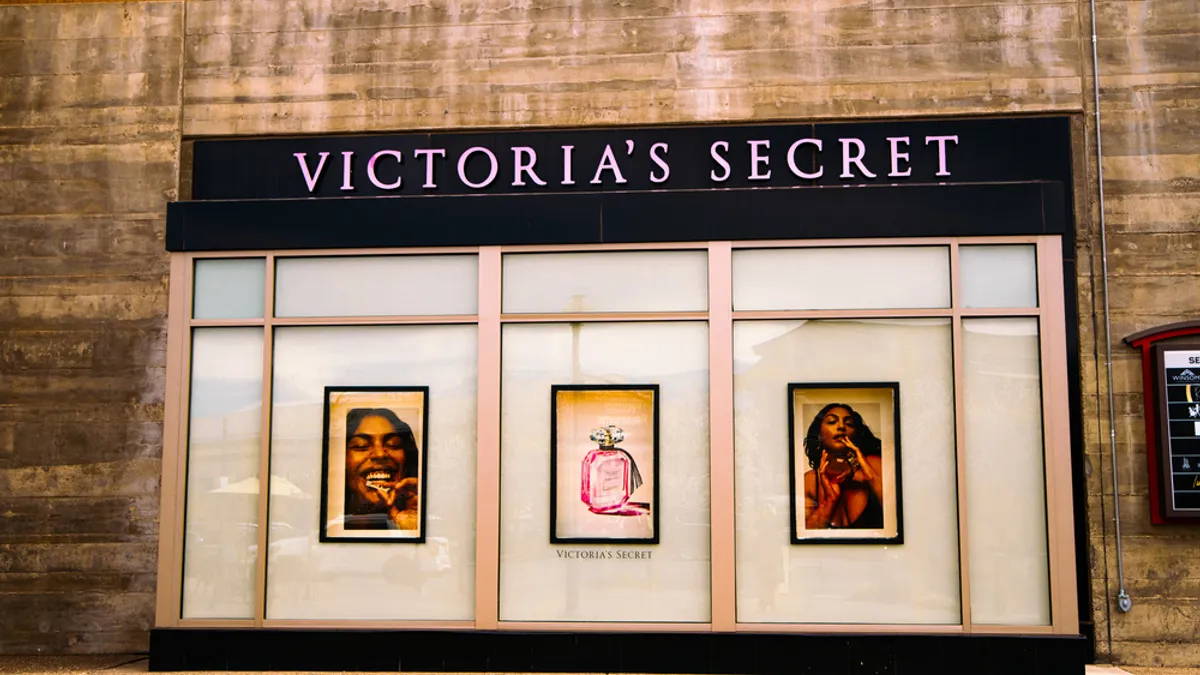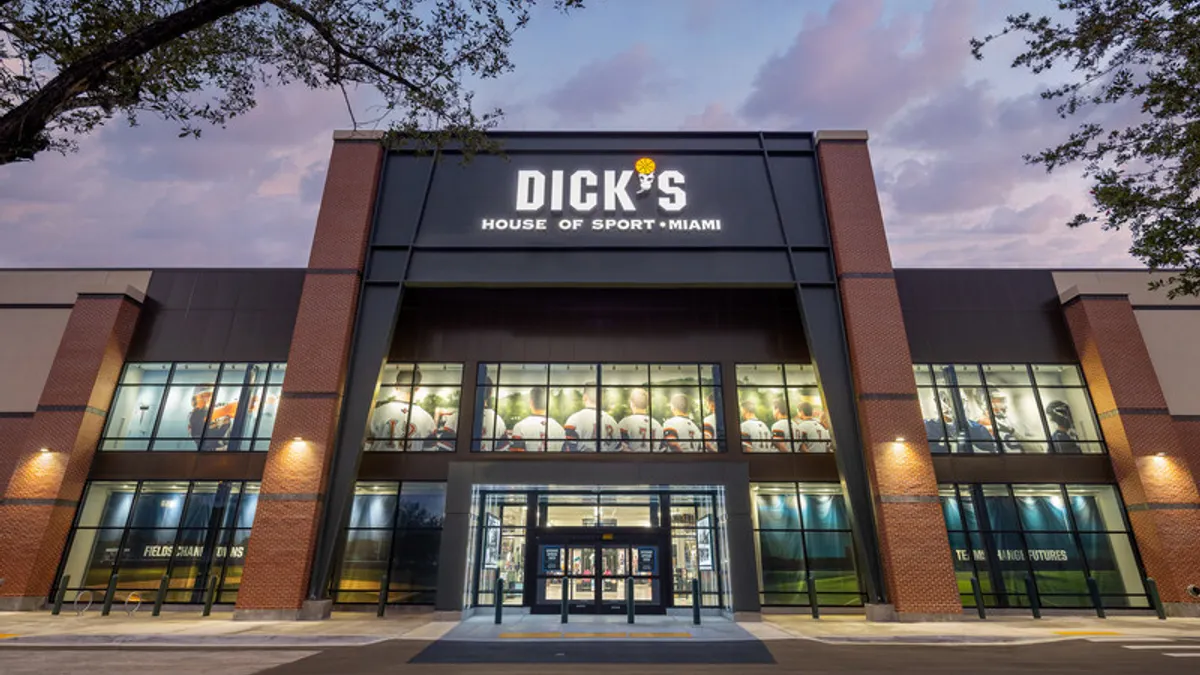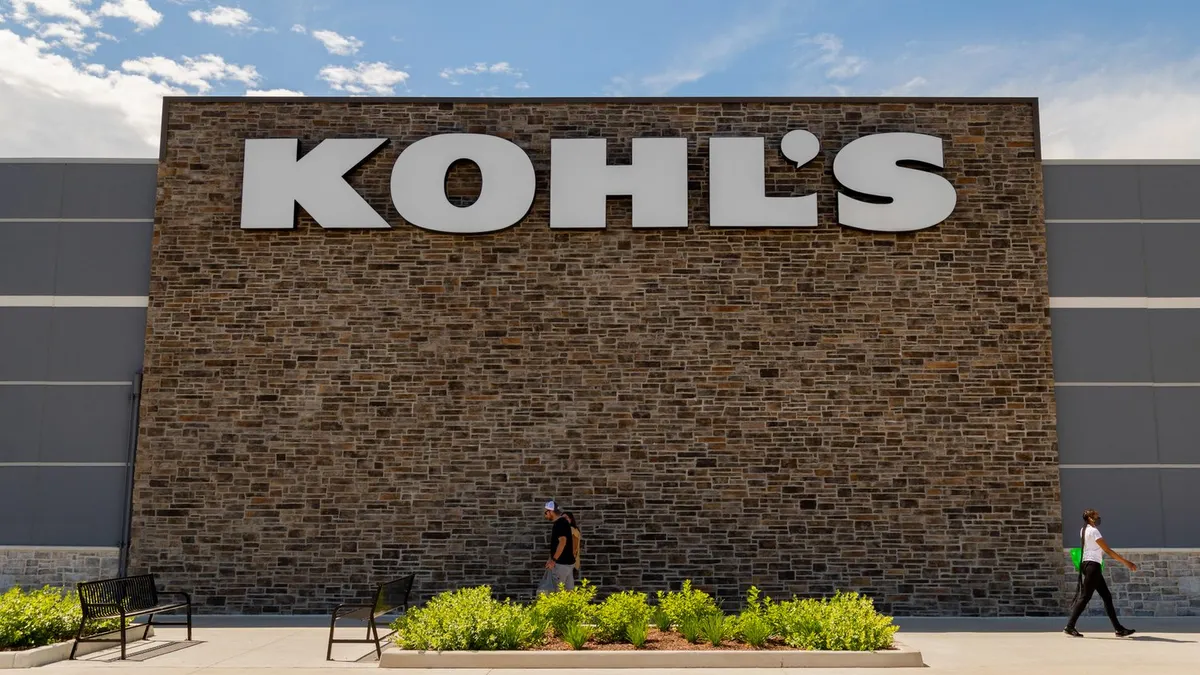From Sports Authority to Aeropostale, the year 2016 has been plagued by one retail bankruptcy after another.
Bankruptcy isn't necessarily the end of the story for some retailers: Many big name retailers have lived through Chapter 11 bankruptcy and re-emerged with more sustainable business models. The process of filing Chapter 11 bankruptcy allows embattled businesses a period of time to restructure their finances and propose a plan to pay back their creditors.
But while Chapter 11 has helped some retailers come back from the dead — including American Apparel and Radioshack — most don't make it back. Between 2005 and 2015, 55% of retail bankruptcies ultimately ended in liquidation, according to an analysis conducted by business advisory firm Alix Partners.
The reasons for filing for Chapter 11 are usually complex and often not the same for different retailers, but there are several key lessons retailers in 2016 can learn from fellow merchants that never re-emerged from bankruptcy proceedings, including failures to adapt to snowballing trends like e-commerce and choosing the wrong investors to help turn around the company.
Here are six retailers that never made it back out of bankruptcy — and what we can all learn from their mistakes.
1. Borders
Founded: 1971
Filed for bankruptcy: 2011
Liquidated: 2011
Once the second-largest book retailer in the country — only trailing Barnes & Noble at the time — Borders boasted over 1,100 stores in its prime in 1995. The retailer grew into a popular national bookstore chain from its Midwestern roots after being bought for about $190 million in 1992 by now-struggling Kmart, which had also picked up Borders competitor Waldenbooks a few years earlier to bolster its bookselling division.
The deal didn't work out as planned. The merger between the two bookstore chains ended with many top Borders executives — who Kmart saw as essential to helping turn around Waldenbooks' flagging business — walking out. Struggling to turn the combined companies into a bookselling powerhouse as competitors like Barnes & Noble started to eat market share, Kmart spun off Waldenbooks and Borders as a combined entity. At first, the company was renamed the Borders-Walden Group but was eventually simply called the Borders Group. The move was good news for Borders, which began to expand internationally as the 1990s came to a close, opening stores in Singapore and the United Kingdom.
The good times didn't last. Like many other now-extinct brick-and-mortar retailers, Borders' demise can largely be attributed to the “Amazon effect” — the e-commerce retailer's uncanny ability to siphon away sales from brick-and-mortar stores. But it's easy to forget that the two weren’t always direct competitors: In 2001, the two companies struck up a deal in which Amazon began selling Borders books online. Borders itself didn’t move online until 2008 or open an e-book store until 2010 — critical errors that investors would later blame for the retailer’s collapse.
With Amazon, Borders didn't know what was coming. When Borders signed the contract to sell its books on Amazon, the e-commerce giant had yet to turn a profit and consumers were still nervous about shopping online. The two companies ultimately cut ties in 2008, a year after Amazon’s Kindle came out and sparked the e-book boom. Despite experiments to bolster its brick-and-mortar experience with a Starbucks partnership and new concept stores , Borders' misjudgment of e-commerce and the profitability of e-books ultimately caused its demise. The company lost $157.4 million in 2007 and put itself up for sale a year later.
It was all downhill from there: In 2009, the retailer began to shed hundreds of stores and a leadership change that year raised further questions about its financial health. The year after, a $25 million infusion by tobacco executive Bennett LeBow (who briefly became CEO) couldn’t save the company as Borders filed for Chapter 11 bankruptcy in 2011 with plans to close 30% of its stores.
The company looked to resurface in an acquisition with private equity firm Najafi Companies, but Borders' top creditors (including major publishing houses Random House and Simon & Schuster) objected to the "unacceptable" deal over fears that the firm would turn around and liquidate the book chain after an acquisition. If Borders were to be liquidated, the creditors said, it should be done by "Borders-approved liquidators," the Ann Harbor News reported. And that's exactly what happened: By July 2011, the deadline for other bids had passed and Borders announced plans to liquidate. Competitor Barnes & Noble won a bid for Borders’ intellectual property and trademarks, paying $13.9 million for the deal.
But that's not quite the end of the Borders story. Despite the retailer's demise, you can still find a Borders today if you travel far enough: The company lives on as a franchise in the United Arab Emirates, Oman and Malaysia under local ownership.
2. Mervyn’s
Founded: 1949
Filed for bankruptcy: 2008
Liquidated: 2008
Mervyn's, the midrange department store that once sold a variety of apparel, housewares and other traditional department store goods, may never have seen its day in the sun. What started as one small California store in 1949 gradually expanded to 266 stores in 14 states by 2004. But analysts say the retailer's growth was stunted by being acquired by legacy department store Dayton-Hudson for $300 million in 1978.
After the acquisition, Mervyn's was overshadowed by sister company Target as Dayton-Hudson scaled the suburban department store nationwide. (Dayton-Hudson has since become Target Corp.) Over the course of the next 25 years, the parent company opened ever fewer new Mervyn's stores and "existing ones took on a shabby look," according to Bloomberg.
In 2004, four years after Dayton-Hudson was renamed the Target Corporation, it sold off Mervyn’s off to three private equity firms, Cerberus Capital Management, Sun Capital Partners and Lubert-Adler, for $1.2 billion. The three companies bought Mervyn's with a goal of reviving the struggling retailer.
The companies didn't get very far. After Mervyn's was split into two units — one that focused on its retail operations and the other on real estate holdings — the retail company suddenly faced higher rent costs because it no longer owned its real estate and had to lease instead. The decision to maximize the company's real estate holdings ultimately sent Mervyn's into a downward spiral of escalating costs and growing losses.
By the time the Great Recession hit in 2008, the department store was already starting to crumble and the person in the CEO hot seat changed four times in just one year. While there was hope Mervyn’s could survive as a part of another company, the private equity firms ultimately decided to liquidate its assets after the holiday season.
But that may not be the full story: A 2008 investigation by Bloomberg alleges that the three firms intentionally ran Mervyn’s into the ground. Bloomberg found the private equity firms stripped the company of its real estate assets, ran up the rent on the department store’s remaining locations and plunged the company into $800 million in debt, reportedly making away with $400 million for themselves. In 2012, CNN Money reported that the firms and several banks agreed to pay Mervyn's creditors $166 million to settle allegations that the firms “took fraudulent profits” and intentionally drove the department store into bankruptcy.
3. KB Toys
Founded: 1922
Filed for bankruptcy: 2004, 2008
Liquidated: 2009
At its height, KB Toys was the second largest toy retailer in the U.S. after Toys ‘R’ Us and the largest mall toy retailer with 1,300 large mall-based stores in 50 states in the late 1990s. But the specialty toy retailer's glory days were short-lived.
As big-box retailers like Walmart and Kmart grew in prominence, KB Toys and other toy retailers (like Child’s Palace, which folded in 1992) struggled as the category's growth began to stagnate. And just as the toy retailer's focus shifted toward malls — which led to significant rent costs — foot traffic at malls began to die down. In an ill-fated move to cut costs, the toy retailer stopped selling popular video game consoles and the latest toys, moving its merchandising model toward closeouts.
The struggling retailer was purchased in 2000 by venture capital firm Bain Capital. But the firm didn’t exactly bring the retailer back from its struggles. Bain was accused of draining money from KB Toys in a dividend recapitalization deal, though Bain denied such allegations. Two lawsuits regarding the deal were later settled and terms were never disclosed.
KB Toys ultimately filed for bankruptcy protection for the first time in 2004 under Bain, according to Reuters. The toy retailer emerged a year later with new owner Prentice Capital Management bringing it out of bankruptcy.
The turnaround was short lived: By the end of 2008, during the worst economic recession the U.S. has seen since the 1930s, the company landed back in bankruptcy court with plans to liquidate all stores amid the holiday season. In court documents, the company attributed the liquidation to a “sudden and sharp decline in consumer sales due to macro-economic forces.”
A scathing 2012 Rolling Stone article accused Bain Capital of tipping KB Toys into its downward spiral. The publication described the acquisition as nothing more than a “cash grab” in an article that focused on then-presidential candidate Mitt Romney’s work at Bain Capital: “Rather than cutting costs and tightening belts, Bain added $300 million in debt to the firm's bottom line while taking out more than $120 million in cash.”
KB Toys ultimately liquidated its assets in 2009. Its brand, website and intellectual property live on through its biggest competitor — Toys ‘R’ Us.
4. Fashion Bug
Founded: 1960
Filed for bankruptcy: 2013
Liquidated: 2013
Budget retailer Fashion Bug was the first and biggest brand of Charming Shoppes, a retail holding company focused on specialty and plus-sized clothing. From the 1960s onward, Fashion Bug stores started to fill strip malls across the country, with the company earning a reputation as a trendy but cost-effective place to shop for plus-size clothing.
In many ways, Fashion Bug was the precursor to fast fashion. The brand became popular before fast fashion retailers like H&M found faster ways to cheaply bring clothing from the runway to the store. Budgets tightened for the retailer in the mid-1990s due to increased competition, but Fashion Bug still held 1,000 stores in 2006.
Six years later, Ascena Retail Group’s acquisition of faltering Charming Shoppe spelled the end for Fashion Bug stores, which were let go in an effort to build up sister brand Lane Bryant. In a last-ditch effort to save the beloved retailer that had everything from “classy work clothes to pajamas," one customer created a Change.org petition, which drew a mere 1,387 signatures.
Fashion Bug’s last stores closed in 2013, but its legacy lives on online: Many of its plus-sized clothes from the 1960s have since resurfaced as popular “vintage” items often shared on Pinterest.
5. B. Dalton
Founded: 1966
Liquidated: 2010
Defunct: 2013
For many shoppers, B. Dalton was the go-to mall bookstore before the rise of bookstore giants Borders and Barnes & Noble.
Founded in 1966, B. Dalton was one of five divisions born out of the much larger regional department store, Dayton’s (which would later go on to become Target). Two years later, B. Dalton acquired Pickwick Books of California with plans to revamp it as a discount bookstore. The two ultimately merged a decade later, giving B. Dalton its off-price reputation.
In 1986, B. Dalton had 777 outlet stores in 48 states and its retail book sales were exceeded only by rival Waldenbooks. But analysts said sales had slipped in recent years due to increased competition with discount stores, and Dayton announced that year it would sell the bookstore chain. Discount competitor Crown Books President Robert Haft foreshadowed the tough times ahead for B. Dalton: The bookstore's buyer will have to “invest at least twice as much more after buying the company to make it work right," he told The New York Times at the time. As it turned out, he was right.
Barnes & Noble, the third-biggest bookstore chain at the time, purchased B. Dalton for an estimated $300 million, operating it separately as a discount bookstore. In the late 1980s, B. Dalton acquired Scribner Book Stores and branched out into electronics, starting an offshoot gaming store called Software Etc., which would later become Gamestop.
Despite initial signs of growth, the chain faced increased competition in the mid-1990s from e-commerce websites like Amazon (which would later drive the e-book trend). In 1994, B. Dalton began shuttering hundreds of stores. B. Dalton continued to operate separately underneath Barnes & Noble until 2010, when all but two locations closed their doors for the last time. Three years later, the last two stores — one in Union Station in Washington, D.C., and the other in Roosevelt Field Mall in Garden City, New York — closed for good.
6. Tweeter
Founded: 1972
Filed for bankruptcy: 2007, 2008
Liquidated: 2008
Today, Tweeter means little to millennials who grew up with a Best Buy around seemingly every corner. But in the mid-1970s, the company grew a reputation for selling high-end audio equipment. By the late 80s, sales began to dip on Tweeter's pricey home audio and video equipment as the company faced growing competition from off-price retailers.
When Jeff Stone took the reins as CEO in 1990, he implemented cost-cutting measures, secured loans and updated the retailer's corporate strategy to keep the company afloat. But in reviewing customer surveys, the company found that people just weren’t willing to buy at their price point. To bring customers back into their stores, Tweeter introduced a price protection guarantee, telling shoppers that if they brought in better deals for its products, the retailer would refund the difference. The program was an immediate success, with the sales volume generated by the policy outweighing revenue lost through refunds.
In 1998, the company raised $46 million by going public. At its peak in the early 2000s, the electronics department store chain operated over 180 stores across the U.S. But Tweeter’s success began to falter in 2004 as cheaper general merchandise retailers like Wal-Mart and Best Buy starter to slow sales at more upscale electronics stores. Tweeter attempted a turnaround by experimenting with a concept store in Las Vegas that broke away from the traditional store design with an aim to sell systems instead of individual products. But the new stores didn't roll out quickly, and the retailer remained unprofitable. In 2007, it announced it would close 49 stores and cut 20% of its staff. Tweeter ultimately filed for Chapter 11 bankruptcy later that year and was purchased through bankruptcy by Schultze Asset Management for $38 million.
Under new management, the stores began going-out-of-business sales. By November of 2008, Tweeter filed for Chapter 11 bankruptcy for the second time. A month later, the company asked the court to convert its bankruptcy into a Chapter 7 liquidation, leading to the closure of 94 stores and the loss of 1,150 jobs. Reuters reported that some employees allegedly hacked the company's website to write messages that the managers "had delivered false promises and lied to employees."
But that wasn’t the end of the story for Tweeter: The company actually saw its most active stock trading day in over six years in 2013, CNBC reported, when the defunct electronics chain was mistaken for the similarly-named rising social media platform — Twitter. Shares skyrocketed more than 1,000%, but the company is still out of business.






